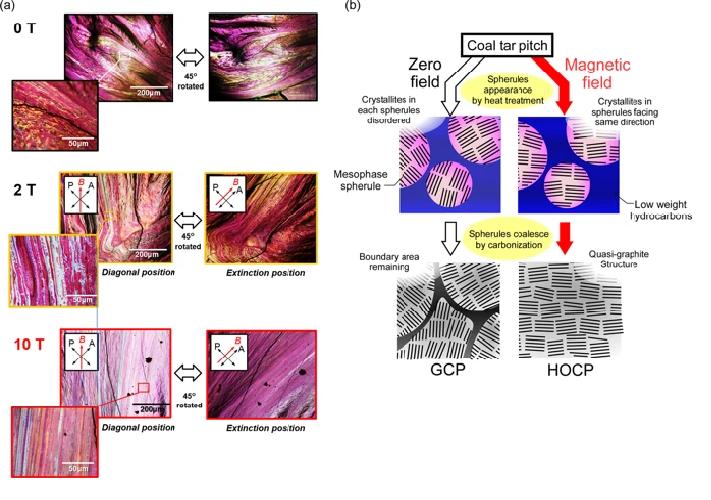
Credit: Copyright 2019, Springer Nature, Licensed under CC BY 4.0
Carbon materials such as nanotubes, graphene, activated carbon and graphite are in high demand. Demands are thought to continue to increase because carbon materials have many beneficial uses and new applications are being discovered. They are essential to air and water purification, electrodes in metal refining, manufacturing pencils and lubricants. The carbon source quality (coal tar pitch), temperature, atmosphere, and preparation methods have great impact on the properties of carbon materials. This is because the structure of carbon materials effect their properties, and the structure can be manipulated in production. Advancing new control parameters during production will lead to the refinement of the functionality of carbon materials.
All materials interact somewhat with magnetic fields whether or not they are magnetic. There have been many other research explorations into methods of orienting graphene and nanotubes in a magnetic field. However, there have been no reports of experiments using a High Magnetic Field (HMF) in the preparation process of carbon materials to manipulate the structure. This current research was made possible by the superconducting magnets that can create magnetic fields of 10 Teslas and beyond.
The research team lead by Atom Hamasaki of the Institute of Science at Shinshu University set out to create more efficient forms of activated carbon by utilizing the superconducting magnets to coax activated carbon precursor of carbonized coal tar pitch during the mesophase (liquid crystal) to form crystallites (similar process to making graphite), thus increasing the volume of pores in the activated carbon by 35%.
The HMF encourages crystallites to form, and when there are more crystallites, more crevasses are created where chemicals can come into contact with the activated carbon. Many other materials that have negative magnetic susceptibility may also be manufactured using this effective procedure with HMF to control for better properties.
###
About Shinshu University:
Shinshu University is a national university in Japan founded in 1949 and working on providing solutions for building a sustainable society through interdisciplinary research fields: material science (carbon, fiber, composites), biomedical science (for intractable diseases, preventive medicine), and mountain science. We aim to boost research and innovation capability through collaborative projects with distinguished researchers from the world. For more information please see: http://www.
Media Contact
Hitomi Thompson
[email protected]
Related Journal Article
http://dx.



